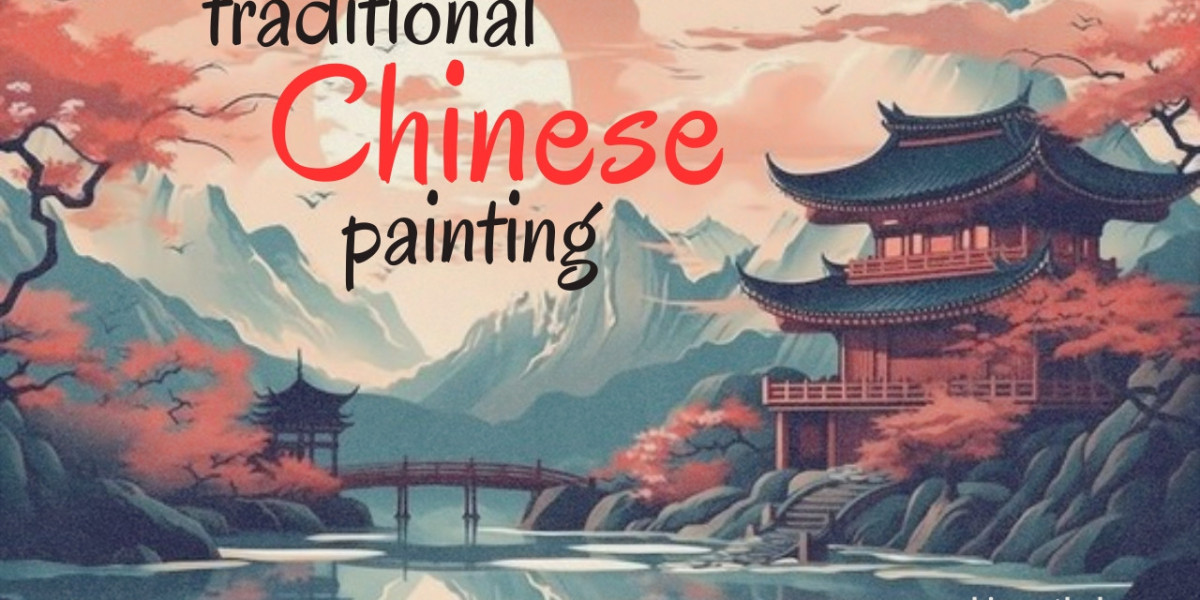Traditional Chinese painting, often called guóhuà (国画), is far more than mere ink splashes on rice paper or silk. It embodies the soul of China’s cultural, philosophical, and artistic heritage, weaving the spirit of nature, human emotion, and philosophical thought into breathtaking visual narratives. When exploring the world of traditional Chinese painting, one steps into a realm where every brushstroke carries centuries of wisdom and an unspoken dialogue with nature.
The Origins of Traditional Chinese Painting
Traditional Chinese painting traces its roots back over 2,000 years, flourishing during the Warring States period and finding refinement through dynasties like Tang, Song, Yuan, Ming, and Qing. Early artworks emphasized humans' relationship with nature, rather than simply copying the external appearance of the world. Artists sought to capture the "qi" (气) — the vital force or spirit — of their subjects.
Unlike Western traditions that leaned toward realism, Chinese artists believed that understanding the spirit of the subject was more important than its physical representation. The rise of Daoism, Confucianism, and Buddhism played an influential role in shaping the approach and techniques used in traditional Chinese painting.
The Core Styles: Gongbi and Xieyi
Two dominant styles emerged in the realm of traditional Chinese painting:
Gongbi (工笔): Known for its meticulous detail and rich, vibrant colors. Artists used fine, deliberate brushstrokes to depict birds, flowers, and court scenes with incredible precision.
Xieyi (写意): Often translated as "freehand" or "sketching the idea," Xieyi emphasizes spontaneity and expression. Artists used broad strokes and washes of ink to capture the essence rather than the detailed form of the subject.
Each style speaks volumes about the artist’s inner world and philosophical beliefs, not just about technical skill.
Materials and Tools: The Four Treasures
No exploration of traditional Chinese painting would be complete without mentioning the "Four Treasures of the Study" — brush (笔), ink (墨), paper (纸), and inkstone (砚). These tools were cherished and selected with utmost care:
Brush: Crafted from bamboo and animal hair, different brushes provided varied stroke effects.
Ink: Usually made from soot mixed with animal glue and sometimes aromatics for a finer finish.
Paper and Silk: "Xuan paper" (宣纸) from Anhui Province became synonymous with traditional Chinese art for its absorbency and strength.
Inkstone: Served as the mixing palette, allowing artists to grind their ink freshly before each session.
Mastery over these simple yet profound tools allowed painters to achieve extraordinary effects that resonate with viewers even today.
Symbolism in Traditional Chinese Painting
Symbolism breathes life into traditional Chinese painting. Every element — whether it is a dragonfly, a mountain, a plum blossom, or a bamboo grove — carries deeper meaning.
Plum Blossom (梅): Resilience and perseverance, especially through hardship.
Bamboo (竹): Flexibility, uprightness, and integrity.
Cranes (鹤): Longevity and wisdom.
Mountains and Water (山水): Often used together in landscape paintings, symbolizing the yin and yang of existence.
The use of symbolism allowed artists to communicate layered messages without the need for elaborate scenes or complicated compositions.
Philosophical Underpinnings
Philosophy and spirituality form the backbone of traditional Chinese painting. Daoism, with its reverence for nature and flow, encouraged artists to blend with the rhythms of the universe. Instead of imposing their will on the painting, they allowed the forms to emerge naturally.
Confucian ideals of harmony, respect, and balance were often depicted through carefully arranged compositions, while Buddhist thought introduced the theme of transcending worldly desires, illustrated through sparse, minimalist scenes or depictions of serene landscapes and contemplative figures.
Painting was not merely an act of creativity; it was a meditative journey toward understanding life itself.
Famous Masters and Their Legacy
Throughout history, many masters have left indelible marks on the evolution of traditional Chinese painting:
Gu Kaizhi (顾恺之): A revered painter from the Eastern Jin Dynasty, known for his refined figure paintings and philosophical commentary on art.
Fan Kuan (范宽): A Song dynasty landscape painter whose monumental paintings like Travelers among Mountains and Streams exemplify the spiritual grandeur of nature.
Qi Baishi (齐白石): A 20th-century painter famous for his expressive Xieyi paintings of shrimp, insects, and simple rural scenes, infused with childlike wonder.
Their works continue to inspire not only artists but also those who seek to understand Chinese culture on a deeper level.
The Role of Calligraphy
Calligraphy and painting in China are inseparable twins. The brush techniques used in calligraphy directly influenced the development of traditional Chinese painting. Often, artists would inscribe a poem on their artwork, harmonizing image and words to create a multi-dimensional experience.
This integration elevated paintings from mere visual experiences to poetic landscapes where the viewer could wander, reflect, and find solace.
Modern Interpretations of Traditional Chinese Painting
Today, traditional Chinese painting is undergoing a fascinating renaissance. Contemporary artists blend classical techniques with modern themes, reinterpreting ancient philosophies for the new world. While purists remain devoted to traditional methods, a younger generation is experimenting with mixed media, digital platforms, and global exhibitions.
Museums, galleries, and cultural festivals around the world celebrate this magnificent art form, keeping its spirit alive and vibrant.
At the same time, the practice of learning traditional brush techniques remains a revered discipline, especially for those seeking to connect with the heart of Chinese heritage.
Preserving the Art for Future Generations
Efforts to preserve traditional Chinese painting are stronger than ever. Educational programs, workshops, and cultural exchange initiatives are nurturing new talents. Major cities in China — like Beijing, Shanghai, and Hangzhou — house renowned art academies where students study under the guidance of masters.
Collectors and enthusiasts are also playing a crucial role by supporting exhibitions, purchasing artwork, and spreading awareness about the richness of traditional Chinese art.
Moreover, the integration of traditional Chinese painting into fashion, interior design, and branding demonstrates its timeless appeal and adaptability.
Why Traditional Chinese Painting Still Matters
In a fast-paced, technology-driven world, traditional Chinese painting reminds us of the importance of slowing down, observing nature, and seeking harmony. Every painting invites the viewer to step outside the chaos of daily life and immerse themselves in timeless beauty and profound wisdom.
Whether it’s an intricate Gongbi depiction of peonies or a sweeping Xieyi portrayal of misty mountains, traditional Chinese painting continues to inspire awe, introspection, and connection across cultures and generations.
Final Thoughts
Traditional Chinese painting stands as a living testament to China's profound artistic and philosophical journey. It offers more than aesthetic pleasure; it invites an exploration of spirit, culture, and identity. Whether you are an art enthusiast, a history buff, or simply a curious soul, diving into the world of traditional Chinese painting opens a door to an endless journey of beauty, meaning, and timeless wisdom.
Ready to experience the elegance and depth of traditional Chinese painting? Explore authentic collections, connect with passionate artists, and bring a piece of this magnificent heritage into your life. Discover the story behind every brushstroke and let traditional Chinese painting transform the way you see the world.







